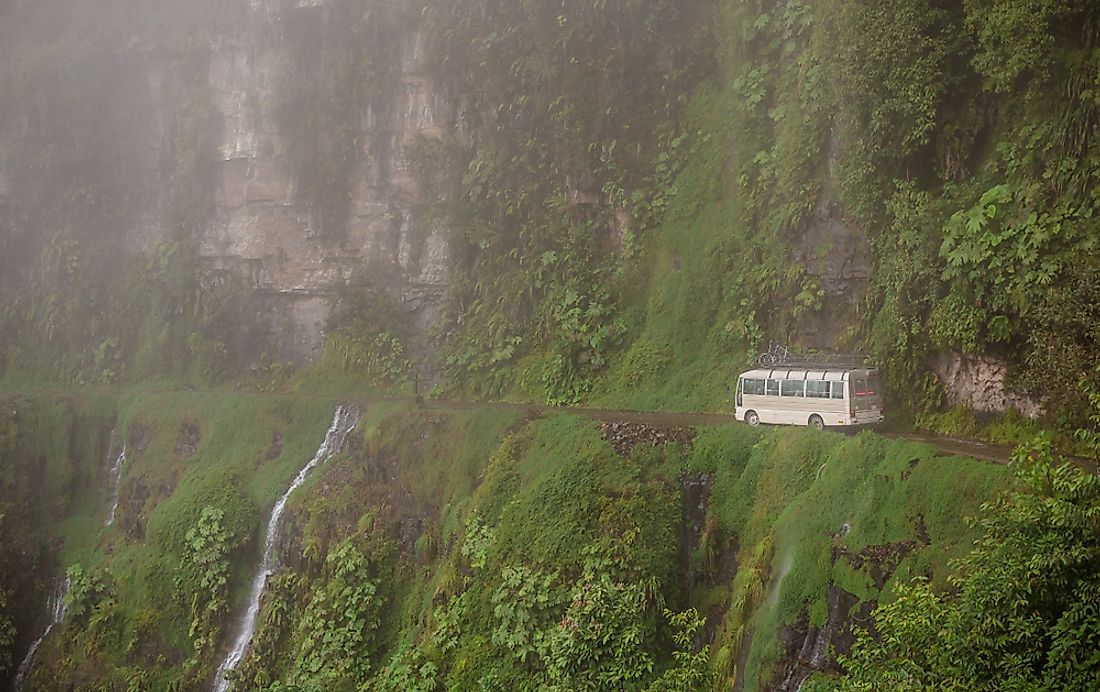North Yungas Road – the Most Dangerous Road in the World

The North Yungas Road, known as the “World’s Most Dangerous Road” as per the title given to it by the Inter-American Development Bank, is one where nearly 300 people lose their lives every year. Drivers who start their journeys on this road usually whisper a quick prayer to appease their god to keep them safe during the treacherous 56 kilometer-long journey from La Paz to Coroico in Yungas, Bolivia. The South Yungas Road which connects La Paz to Chulumani, 64 kilometers away, is nearly as lethal as its northern counterpart. Starting from La Paz, the North Yungas Road involves an ascent of 15,260 feet and then drops down to 3,900 feet at Coroico. Despite being so deadly, this is the only roadway connecting La Paz to the otherwise inaccessible areas of Yungas and thus unavoidable.
4. Thrill-seeking and Tourism
The infamous reputation of the North Yungas Road might be sufficient to scare the masses away but for some, the scary ride along the mountain road is a major source of adventure and attraction. Since the 1990s nearly 25,000 adventurists have traveled along this road in their vehicles, usually bikes, to experience an adrenaline rush like never before. The 64-kilometer downhill drive is the major attractant for them and though 18 cyclists have lost their lives on this road already, there is no dearth of enthusiasm among the many others taking a ride on this dangerous road. Today, a number of tour operators provide guides, maps, equipment and infrastructure to those seeking extreme thrills on the North Yungas Road.
3. Uniqueness
The North Yungas Road was built in the 1930s by Paraguayan prisoners of the Chaco War. On one side of the road, there is deep abyss while on the other side there are the towering cliffs, rising up to a height of about 2,000 meters. There is no escape for a vehicle that goes slightly off-balance on the road that is only about 10 feet wide. A large section of the road also lacks guardrails of any form and crosses installed at the mind boggling hairpin bends on the road warn one of the previous accidental spots to be avoided. Also, though right hand driving is prevalent in all other parts of Bolivia, on the North Yungas Road, left hand driving rules so that the driver is able to better estimate the distance of the vehicle from the edge of the road. The weather of the place also further worsens the conditions on the road as rains and fog create a misty environment that often reduces visibility. Falling rocks and stones, cascading waterfalls and mudslides are other impediments to safe travel along the road.
2. Nearby Habitats
The North Yungas Road snakes its way through a transition zone connecting the montane grasslands and shrublands eco-region at one end to the Bolivian Amazon rainforest region at its other end. The road thus traverses a landscape of lush, green vegetation supported by high rainfall throughout the year. Moist broadleaf forests dominate the scenery here.
1. Media Depictions
The North Yungas Road, a thrill-seeker’s paradise has also found mention in several media broadcasts, shows, and publications. BBC has featured the road in two of its shows, the "Top Gear: Bolivia Special" episode, an episode from the Top Gear series 14 television show and in episode 3 of series 3 of the “World's Most Dangerous Roads”. The History Channel’s series, "Ice Road Truckers", has also depicted the North Yungas Road. A television commercial for Mitsubishi Outlander was also shot along this road.







